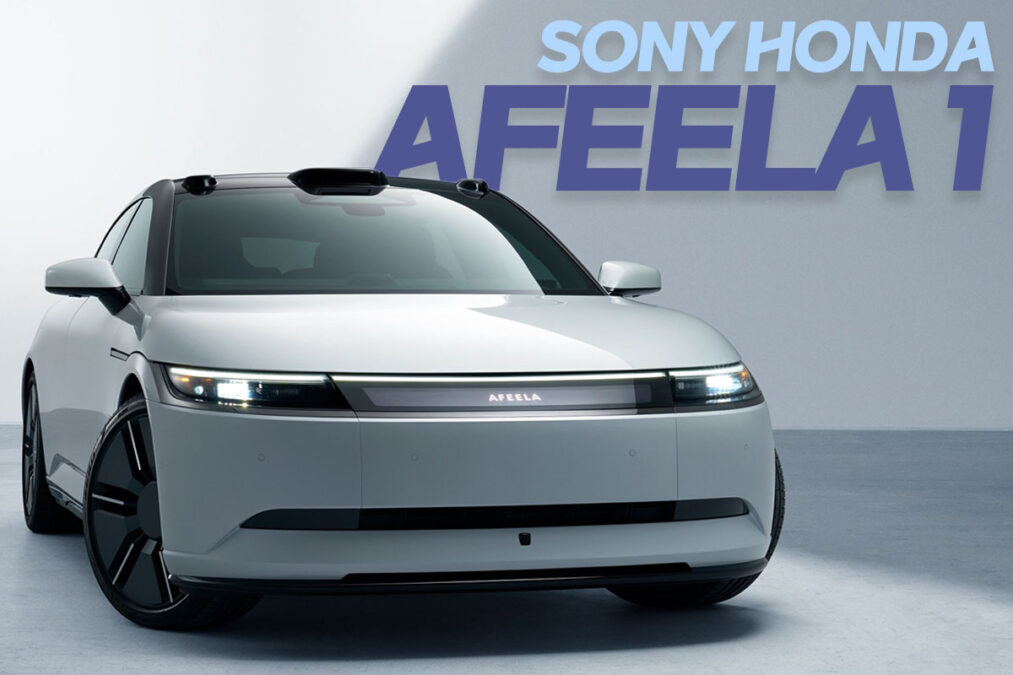
It may sound surprising, but Sony Honda Mobility is officially entering the electric vehicle market with the debut of its first EV, the Afeela 1, at CES 2024. The physical prototype has now been revealed to the public, and it’s clear that this is no ordinary electric sedan. The Afeela 1 is a large EV with hatchback styling, offering a generous 27 cubic feet (764L) of trunk space.
In terms of size, it’s slightly shorter than the Lucid Air, another full-size electric sedan, but the Afeela 1’s longer wheelbase promises better stability and hints at a more spacious interior. Sony is leveraging its expertise in cutting-edge electronics to position the Afeela 1 as the ultimate entertainment-focused EV.

Performance Concerns: Charging Speed Lags Behind
While Sony emphasizes the Afeela 1’s advanced electronics and infotainment systems, key details about its driving performance and charging speeds—two crucial factors for U.S. EV buyers—are noticeably missing. We know that the Afeela 1 features all-wheel drive, powered by 180 kW (about 245 horsepower) electric motors on both axles. The vehicle’s battery is rated at 91 kWh, offering an EPA-estimated range of about 298 miles (480 km) when fully charged.
The range is competitive, but the charging speed is where the Afeela 1 falls short. Tesla, for example, offers peak charging rates of 250 kW, while Hyundai and Kia’s E-GMP platform supports ultra-fast charging up to 350 kW. In comparison, the Afeela 1 is limited to a 150 kW DC fast-charging rate, meaning drivers could face longer charging stops on long road trips.
The Afeela 1 also has impressive tech, including handle-less electric doors, air suspension, and the Afeela Intelligent Drive system that uses 40 sensors. However, it remains to be seen how much value consumers will place on these features compared to raw performance numbers.

Can It Compete with Tesla? A Clear Difference in Direction
High-performance EVs like the Tesla Model S boast acceleration times from 0 to 60 mph in the 2-second range, but Sony has not disclosed the Afeela 1’s acceleration figures. This suggests that Sony’s focus is likely more on comfort and convenience rather than sporty driving dynamics. After all, Sony’s strengths lie in entertainment technology, which is evident in the Afeela 1.
The Afeela 1 is packed with features designed to create a mobile theater and gaming experience. It includes a massive digital display that spans the entire dashboard, supports PS5 Remote Play, and integrates popular streaming services like Netflix and YouTube. It has a Dolby Atmos sound system and an AI-powered voice assistant called Afeela Personal Agent.
While Tesla offers various digital features, the Afeela 1 aims to deliver a more robust multimedia experience. However, one significant drawback is that many features are available only through a subscription service.
While free for the first three years, consumers must pay a monthly or annual fee for continued access. This could become a tough sell for buyers, especially compared to Tesla, which includes most of its features in the vehicle’s purchase price. This subscription model could make potential buyers hesitant.

Honda’s Tech Prowess Meets Luxury Pricing
The Afeela 1 will be manufactured at Honda’s Marysville, Ohio, plant, but its price tag places it squarely in the premium EV segment. The top-tier Signature model, slated for release in 2026, will start at $102,900. The entry-level Origin, expected to launch in 2027, will retail for $89,900.
The base Origin model will have 19-inch wheels but lack some high-end features in the Signature trim, such as rear-seat entertainment screens and a digital rearview mirror. Additionally, the Origin will be available only in black interior and exterior, while higher trims will offer color options like black, gray, and white.
The Afeela 1 is more than just another electric vehicle; it’s a bold statement from Sony and Honda to the automotive industry. However, merely focusing on multimedia features might not be enough to challenge Tesla’s dominance. Whether Sony Honda Mobility can carve out a unique position in the EV market—rather than becoming just another experiment in automotive history—will depend on real-world performance and how consumers react to this tech-laden offering.
























